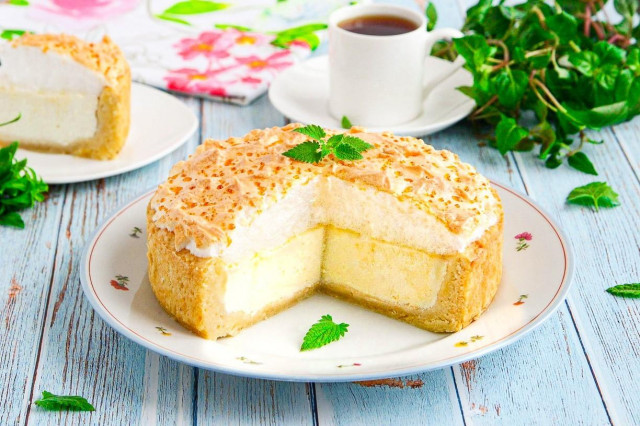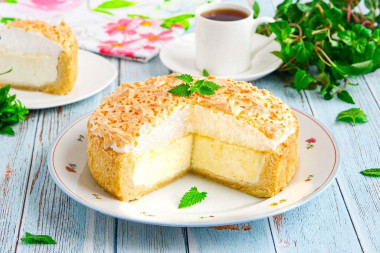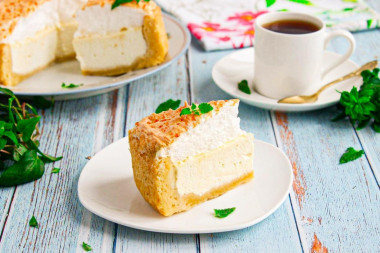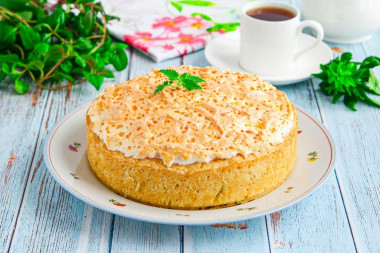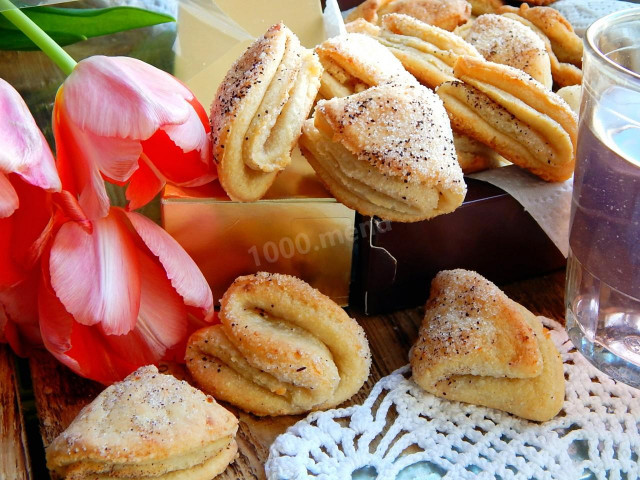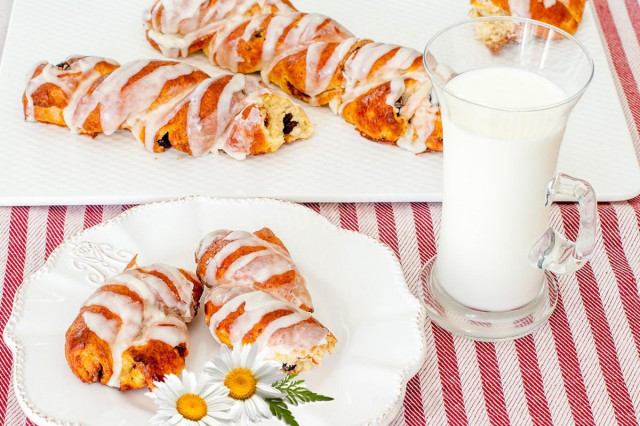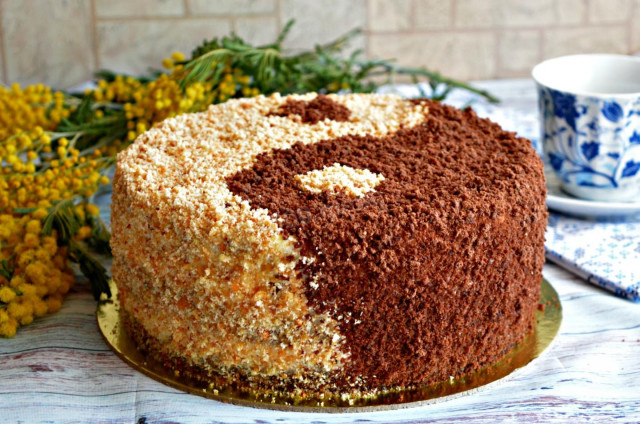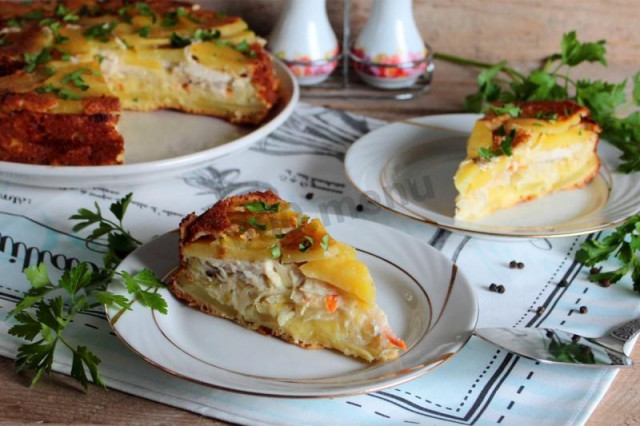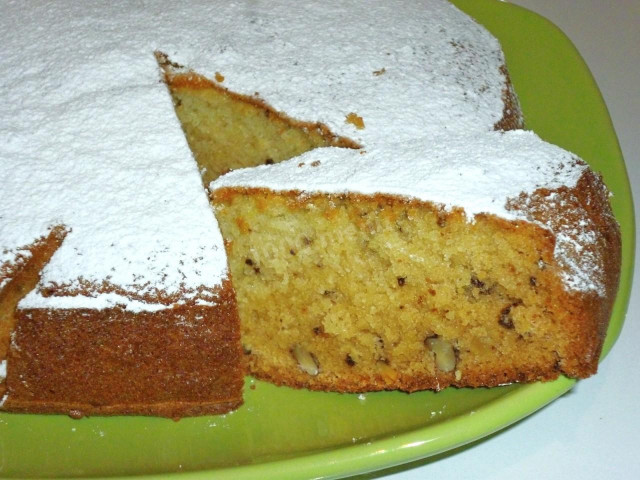Composition / ingredients
Step-by-step cooking
Step 1:
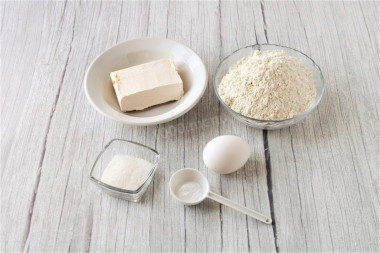
How to make Angel's Tears Curd cake? First, measure out the necessary ingredients for the dough. The butter should be soft, so take it out of the refrigerator in advance.
Step 2:
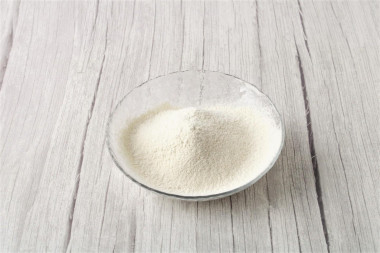
Mix flour with baking powder and sift through a sieve so that it becomes more airy.
Step 3:
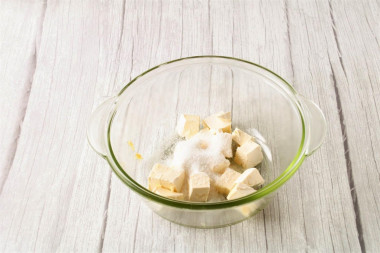
Combine soft butter with sugar and vanilla sugar. Mix everything until you get a soft mass.
Step 4:
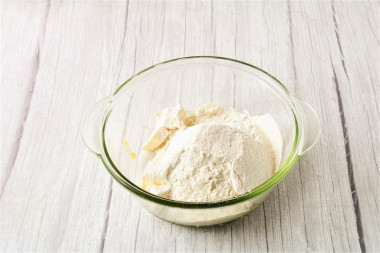
Pour in the flour sifted with baking powder.
Step 5:
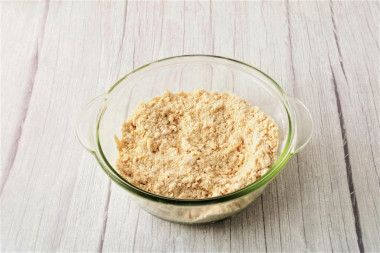
Quickly rub everything with your hands until a sand crumb forms.
Step 6:
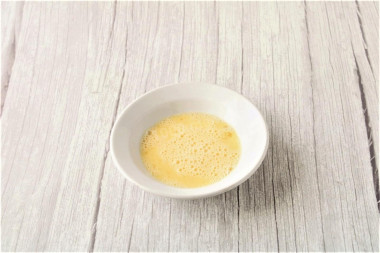
In a small bowl, beat the egg with a fork until smooth.
Step 7:
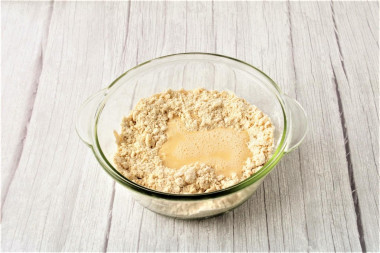
Add the beaten egg to the sand crumbs, mix with a spoon.
Step 8:
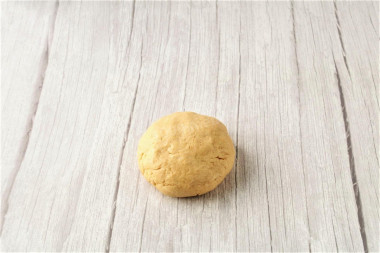
Then quickly knead the dough with your hands. It does not need to be kneaded for a long time. Assemble the dough into a ball.
Step 9:
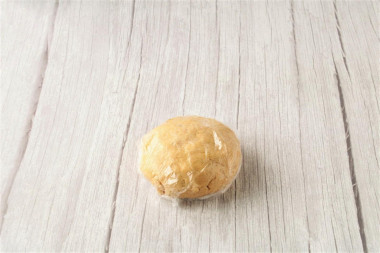
Wrap the dough in plastic wrap and put it in the refrigerator for half an hour.
Step 10:
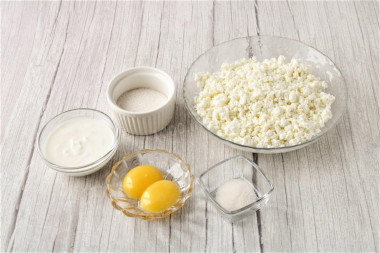
For the filling, take the cottage cheese soft, so that the filling is more tender. The fat content of cottage cheese and sour cream can be any, but the higher it is, the tastier the cake will turn out. Vanilla sugar can be replaced with vanilla (at the tip of the knife).
Step 11:
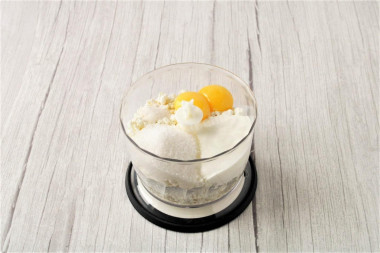
Combine cottage cheese, sour cream, egg yolks, sugar and vanilla sugar in a blender bowl.
Step 12:
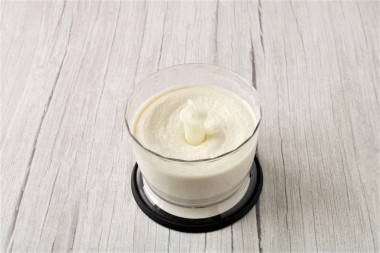
Whisk everything until a homogeneous viscous mass is obtained.
Step 13:
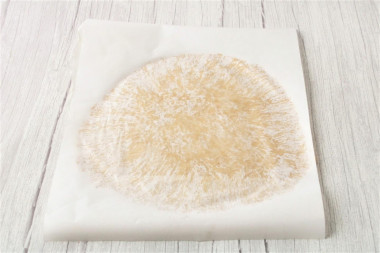
Roll out the cooled dough between two sheets of parchment into a round layer.
Step 14:
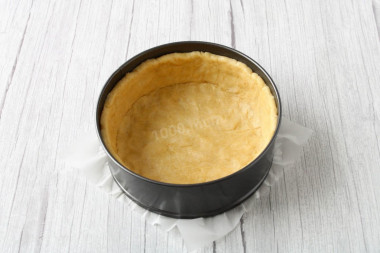
Cover the bottom of the baking dish with parchment. I have a shape diameter of 18 cm. Transfer the rolled dough to the mold, carefully distribute it along the bottom and walls, forming sides about 4 cm high.
Step 15:
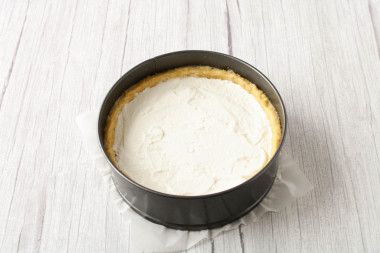
Pour the curd filling on the dough, level the top.
Step 16:
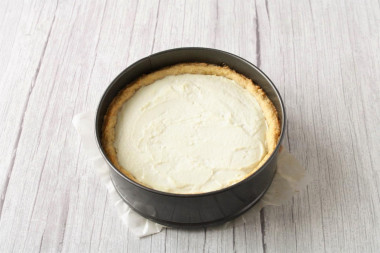
Bake in a preheated 180C oven for about 25 minutes. The cake will be slightly browned at the edges and the filling will seize. Determine the cooking time, taking into account the peculiarities of your oven.
Step 17:
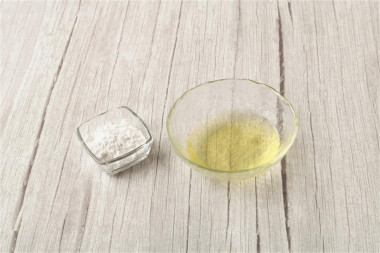
A few minutes before the end of baking the cake, prepare the meringue. Separate the egg whites very carefully from the yolks and cool. There should not be a drop of yolk in the proteins, otherwise it will not work to get a stable protein foam when whipping.
Step 18:
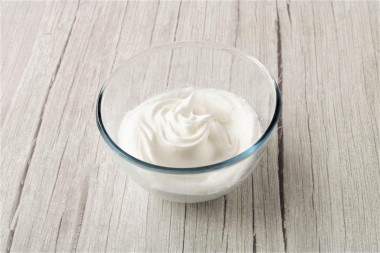
In a clean, dry, fat-free container, whisk the whites. Start whipping at a low speed of the mixer until a soft foam. Without stopping whipping, pour in small portions of powdered sugar. Gradually increase the speed of the mixer. Whisk the whites until a stable dense mass is formed.
Step 19:
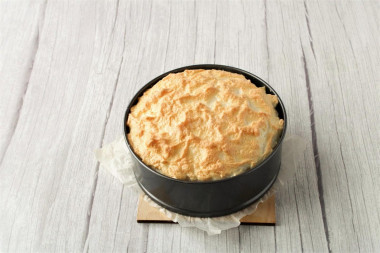
Take the cake with the filling out of the oven and immediately put the whipped whites on top. You can make wavy patterns on the surface. Put the cake back in the oven and continue baking at 150C for about 10-15 minutes until a blush appears on the protein layer.
Step 20:
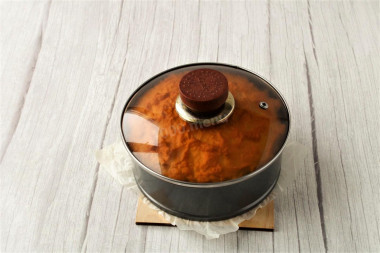
Now the most important and important points. Immediately cover the finished cake with a lid or plate. The lid should not touch the surface of the cake, so that the meringue is not damaged. To form caramel droplets on the cake, it must be put in the refrigerator for 2 hours. In the cooler season, this can be done on the balcony. My cake was cooled for about 2.5 hours.
Step 21:
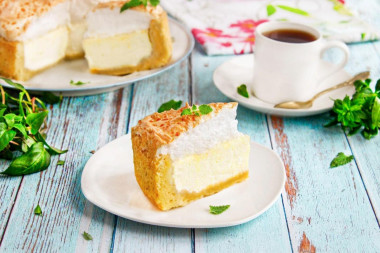
During the cooling process, caramel "tears" will appear on the surface of the meringue. You can serve the cake to the table. Enjoy your meal!
In order for the protein to beat well, the eggs should be fresh and chilled (from the refrigerator), and the whipping dishes should be dry and clean, without traces of fat. When you separate the whites from the yolks, make sure that not a drop of yolk gets into the protein. For better whipping, you can add a small pinch of salt or a few drops of lemon juice (vinegar) to the proteins. Beat with a mixer at a minimum speed, increasing the speed as you beat.
Choose enameled, ceramic or glass dishes for whipping (in no case aluminum, as the whites will turn gray!).
Keep in mind that everyone's ovens are different. The temperature and cooking time may differ from those specified in the recipe. To make any baked dish successful, use useful information about the features of ovens !
So that the oven has time to heat up to the desired temperature, turn it on in advance (10-20 minutes before the start of cooking).
Calorie content of the products possible in the dish
- Sour cream with 30% fat content - 340 kcal/100g
- Sour cream of 25% fat content - 284 kcal/100g
- Sour cream with 20% fat content - 210 kcal/100g
- Sour cream of 10% fat content - 115 kcal/100g
- Sour cream - 210 kcal/100g
- Chicken egg - 157 kcal/100g
- Egg white - 45 kcal/100g
- Egg powder - 542 kcal/100g
- Egg yolk - 352 kcal/100g
- Ostrich egg - 118 kcal/100g
- Cottage cheese of 40% fat content - 466 kcal/100g
- Cottage cheese of 20% fat content - 233 kcal/100g
- Cottage cheese of 18% fat content - 226 kcal/100g
- Cottage cheese of 10% fat content - 156 kcal/100g
- Low-fat cottage cheese - 75 kcal/100g
- Cottage cheese with sour cream - 260 kcal/100g
- Fruit cottage cheese - 147 kcal/100g
- Soft dietary cottage cheese - 170 kcal/100g
- Vitalinia cottage cheese - 64 kcal/100g
- Cottage cheese "morning" ( "danone") without sugar - 91 kcal/100g
- Cottage cheese - 156 kcal/100g
- Granulated sugar - 398 kcal/100g
- Sugar - 398 kcal/100g
- Butter 82% - 734 kcal/100g
- Amateur unsalted butter - 709 kcal/100g
- Unsalted peasant butter - 661 kcal/100g
- Peasant salted butter - 652 kcal/100g
- Melted butter - 869 kcal/100g
- Wheat flour - 325 kcal/100g
- Baking powder - 79 kcal/100g
- Egg yolks - 352 kcal/100g
- Powdered sugar - 374 kcal/100g
- Vanilla sugar - 379 kcal/100g
- Egg whites - 44 kcal/100g

